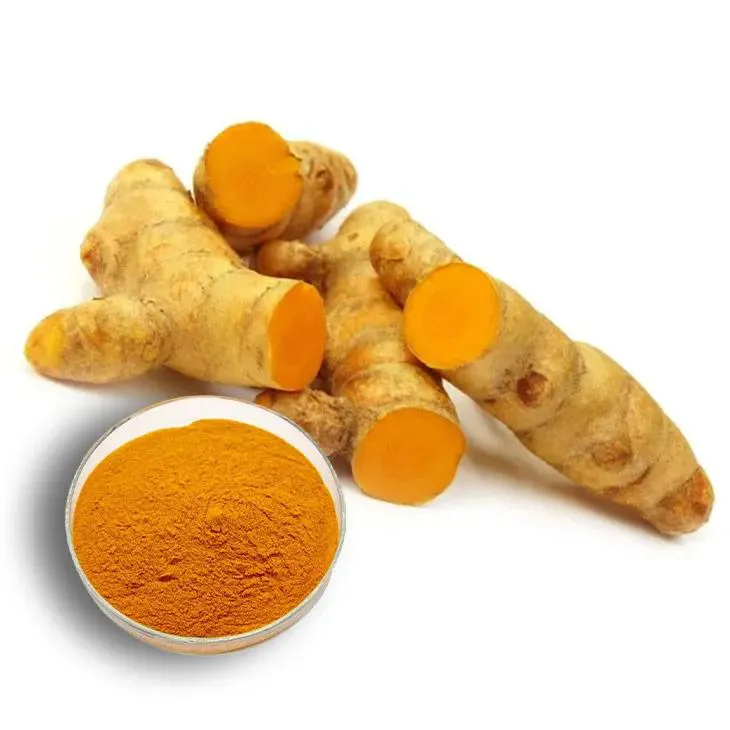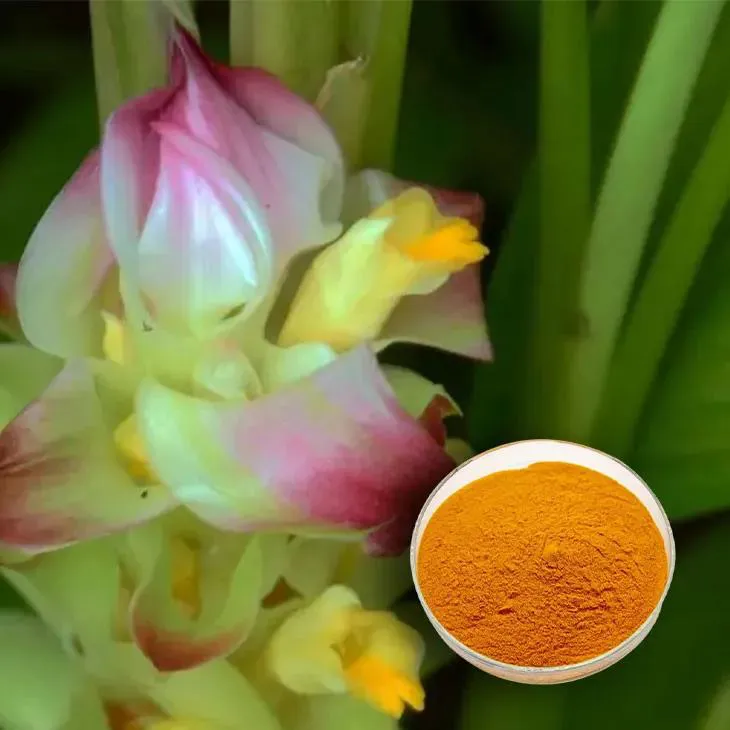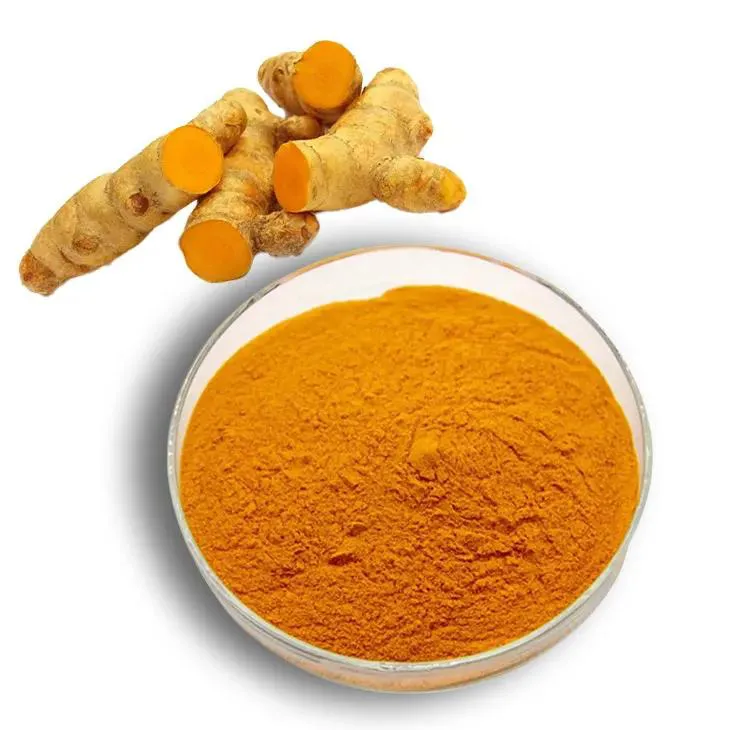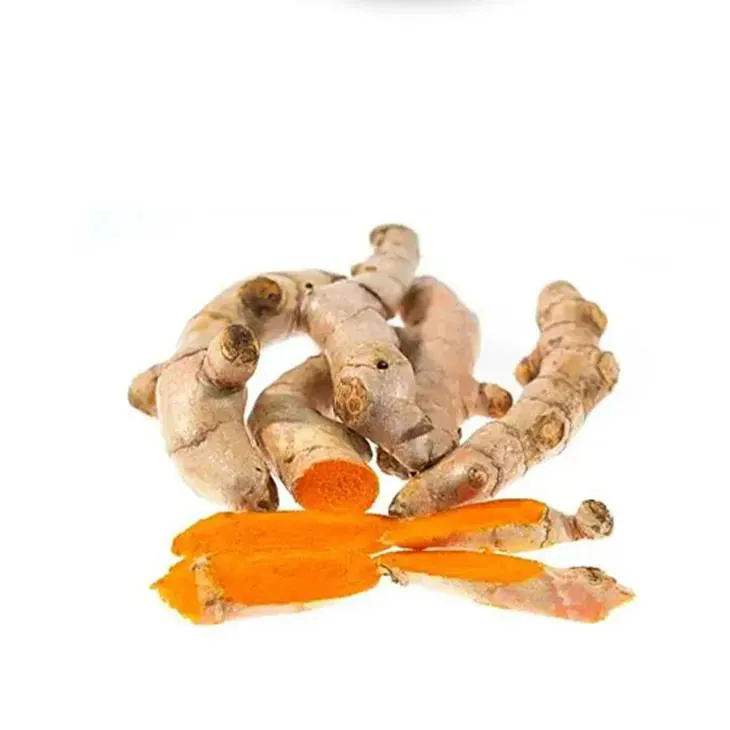- 0086-571-85302990
- sales@greenskybio.com
The Spice of Life: A Look at Curcumin Extraction Plants in India
2024-08-09

Introduction
India, known as the land of spices, has a long - standing relationship with turmeric, a golden - hued spice that is not only a staple in Indian cuisine but also a valuable ingredient in traditional medicine. Curcumin, the active compound in turmeric, has gained significant global attention in recent years due to its numerous health benefits. Curcumin extraction plants in India are thus at the center of a multi - faceted industry that encompasses food, pharmaceuticals, and cosmetics.

1. Sourcing of Turmeric
1.1. Agricultural Origins
- Turmeric is primarily grown in the southern states of India such as Kerala, Tamil Nadu, and Andhra Pradesh. These regions have the ideal climate, with warm temperatures and high humidity, which is conducive to the growth of turmeric plants.
- The soil in these areas is rich in nutrients, providing the necessary sustenance for the turmeric rhizomes to develop. The rhizomes are the part of the plant from which Curcumin is ultimately extracted.
- Most turmeric farming in India is still carried out by small - scale farmers. They follow traditional farming methods that have been passed down through generations. These include preparing the land by plowing and adding organic manure.
- The turmeric plants are sown during the monsoon season and are carefully tended to over the next 8 - 10 months until they are ready for harvest. During this time, farmers protect the plants from pests and diseases using natural remedies where possible.
- Harvesting is a labor - intensive process. The turmeric rhizomes are carefully dug out of the ground by hand. This ensures that the rhizomes are not damaged, as any damage can affect the quality of the curcumin that can be extracted.

2. The Complex Extraction Processes
2.1. Pre - treatment of Turmeric
- Once the turmeric rhizomes are harvested, they are first washed thoroughly to remove any dirt or debris. This is a crucial step as any impurities can contaminate the final Curcumin Extract.
- After washing, the rhizomes are dried. Drying can be done either in the sun or in specialized drying chambers. Sun - drying is a traditional method that is still widely used in India. However, drying chambers offer more controlled conditions, which can result in more consistent drying and better quality of the dried turmeric.
- There are several methods for extracting curcumin from dried turmeric. One of the most common methods is solvent extraction. In this method, a suitable solvent such as ethanol or acetone is used to dissolve the curcumin from the turmeric powder. The solvent - turmeric mixture is then stirred and heated gently to facilitate the extraction process.
- Another method is supercritical fluid extraction. This is a more advanced and relatively expensive method. Supercritical carbon dioxide is used as the extraction medium. This method has the advantage of producing a purer Curcumin Extract with fewer impurities compared to solvent extraction.
- After the extraction, the curcumin - rich solution needs to be separated from the solvent. This is usually done through evaporation or distillation processes. The resulting Curcumin Extract is then further processed to obtain a more concentrated and refined product.

3. Quality Control Measures
3.1. Raw Material Inspection
- Quality control in curcumin extraction plants begins with the inspection of the raw turmeric. The turmeric rhizomes are checked for their variety, as different varieties may have different curcumin contents. Only high - quality varieties are selected for extraction.
- The physical appearance of the rhizomes is also examined. They should be free from mold, rot, or any signs of damage. Any sub - standard rhizomes are rejected at this stage.
- During the extraction process, strict monitoring of various parameters is carried out. For example, in solvent extraction, the temperature and the ratio of solvent to turmeric powder are carefully controlled. Any deviation from the optimal values can affect the extraction efficiency and the quality of the final product.
- In supercritical fluid extraction, the pressure and flow rate of the supercritical carbon dioxide are monitored continuously. This ensures that the extraction process is carried out under the ideal conditions to obtain a high - quality curcumin extract.
- Once the curcumin extract is obtained, it undergoes a series of tests to determine its quality. These tests include analysis of curcumin content, purity, and the presence of any contaminants.
- The curcumin content is measured using spectroscopic methods such as HPLC (High - Performance Liquid Chromatography). Purity is determined by assessing the percentage of curcumin in the extract relative to other components.
- Testing for contaminants such as heavy metals, pesticides, and microbial organisms is also carried out. Only products that meet the strict quality standards are allowed to be sold in the market.

4. Impact on Local Communities
4.1. Employment Opportunities
- Curcumin extraction plants in India provide a significant source of employment, especially in rural areas where turmeric farming is prevalent. These plants employ workers at various stages of the production process, from the handling of raw turmeric to the packaging of the final curcumin extract.
- Jobs are created not only within the plants but also in related industries such as transportation and packaging. For example, trucks are needed to transport the turmeric from the farms to the extraction plants, and packaging materials need to be sourced and prepared.
- The demand for turmeric from curcumin extraction plants has a positive impact on the income of farmers. As the plants require a large quantity of high - quality turmeric, farmers are motivated to improve their farming practices to meet the demand.
- This has led to an increase in the prices of turmeric in some regions, which has directly benefited the farmers. In addition, some extraction plants provide technical support and training to farmers to help them improve their yields and the quality of their turmeric.
- Turmeric has deep - rooted cultural significance in India. The presence of curcumin extraction plants helps to preserve and promote this cultural heritage. The plants are often seen as a modern - day extension of the traditional use of turmeric in India.
- Moreover, the success of the curcumin extraction industry has also contributed to the pride of the local communities. It has put the spotlight on the value of local resources and traditional knowledge, which has a positive impact on the overall social fabric of the communities.
5. Potential for Future Growth
5.1. Global Market Demand
- The global market for curcumin has been growing steadily in recent years. This is due to the increasing awareness of its health benefits, such as its anti - inflammatory, antioxidant, and anti - cancer properties. As a result, there is a growing demand for high - quality curcumin extracts from India.
- India has a competitive advantage in the curcumin market due to its large - scale production of turmeric and its well - established extraction industry. The country has the potential to further expand its market share in the global curcumin market.
- There is ongoing research on curcumin in India and around the world. New extraction methods are being developed to improve the efficiency and purity of curcumin extraction. For example, researchers are exploring the use of nanotechnology to enhance the bioavailability of curcumin.
- Research is also focused on finding new applications for curcumin. In the pharmaceutical industry, curcumin is being studied for its potential use in the treatment of various diseases such as Alzheimer's and diabetes. In the cosmetics industry, it is being used in anti - aging and skin - brightening products.
- As the curcumin extraction industry in India grows, there is a need to adopt sustainable practices. This includes sustainable farming of turmeric, such as reducing the use of chemical pesticides and fertilizers and promoting organic farming.
- The extraction plants themselves can also adopt more environmentally friendly extraction methods. For example, using renewable energy sources for the extraction processes and reducing waste generation during production.
Conclusion
Curcumin extraction plants in India play a vital role in a diverse and growing industry. From the sourcing of turmeric to the complex extraction processes, quality control measures, impact on local communities, and potential for future growth, these plants are an important part of India's economic and cultural landscape. As the global demand for curcumin continues to rise, India has the opportunity to further develop and expand this industry while also ensuring sustainable practices are in place.
FAQ:
Q1: What is the main source of curcumin in India?
Turmeric is the main ingredient for curcumin in India. India is one of the largest producers of turmeric in the world, and the turmeric used in curcumin extraction plants is sourced from local farms.
Q2: What are the common extraction processes in curcumin extraction plants?
There are several common extraction processes. One is solvent extraction, where solvents like ethanol or acetone are used to extract curcumin from turmeric. Another method is supercritical fluid extraction, which uses supercritical carbon dioxide. These processes are complex and require careful control of parameters such as temperature, pressure, and extraction time.
Q3: How do curcumin extraction plants ensure quality control?
Quality control in curcumin extraction plants involves multiple steps. Firstly, the quality of the sourced turmeric is carefully inspected for purity, freshness, and absence of contaminants. During the extraction process, strict monitoring of parameters like solvent purity and extraction conditions is carried out. After extraction, the curcumin product is tested for its curcuminoid content, purity, and microbiological safety to ensure it meets the required standards.
Q4: What is the impact of curcumin extraction plants on local communities?
These plants have a significant impact on local communities. Economically, they create job opportunities, both directly in the plants and indirectly in related sectors such as turmeric farming and transportation. Socially, they can contribute to the development of local infrastructure. However, there may also be some environmental concerns if proper waste management is not in place during the extraction process.
Q5: What is the potential for future growth in the curcumin extraction industry?
The potential for future growth is substantial. With the increasing awareness of the health benefits of curcumin, the demand for curcumin - based products in the pharmaceutical, nutraceutical, and cosmetic industries is growing. Additionally, research is ongoing to develop more efficient extraction methods and new applications for curcumin, which will further drive the growth of this sector.
Related literature
- Turmeric and Curcumin: From Ancient Medicine to Modern Research"
- "The Chemistry and Biology of Curcumin"
- "Curcumin: Production, Characterization, and Applications"
- ▶ Hesperidin
- ▶ Citrus Bioflavonoids
- ▶ Plant Extract
- ▶ lycopene
- ▶ Diosmin
- ▶ Grape seed extract
- ▶ Sea buckthorn Juice Powder
- ▶ Fruit Juice Powder
- ▶ Hops Extract
- ▶ Artichoke Extract
- ▶ Mushroom extract
- ▶ Astaxanthin
- ▶ Green Tea Extract
- ▶ Curcumin
- ▶ Horse Chestnut Extract
- ▶ Other Product
- ▶ Boswellia Serrata Extract
- ▶ Resveratrol
- ▶ Marigold Extract
- ▶ Grape Leaf Extract
- ▶ New Product
- ▶ Aminolevulinic acid
- ▶ Cranberry Extract
- ▶ Red Yeast Rice
- ▶ Red Wine Extract
-
Nutmeg Extract
2024-08-09
-
Konjac Powder
2024-08-09
-
Green Tea Extract
2024-08-09
-
Oat Straw Extract Powder
2024-08-09
-
Almond Extract Powder
2024-08-09
-
Camu Camu Extract
2024-08-09
-
Saponin Extract
2024-08-09
-
Beta Carotene
2024-08-09
-
Kidney Bean Extract
2024-08-09
-
Moringa powder
2024-08-09





















